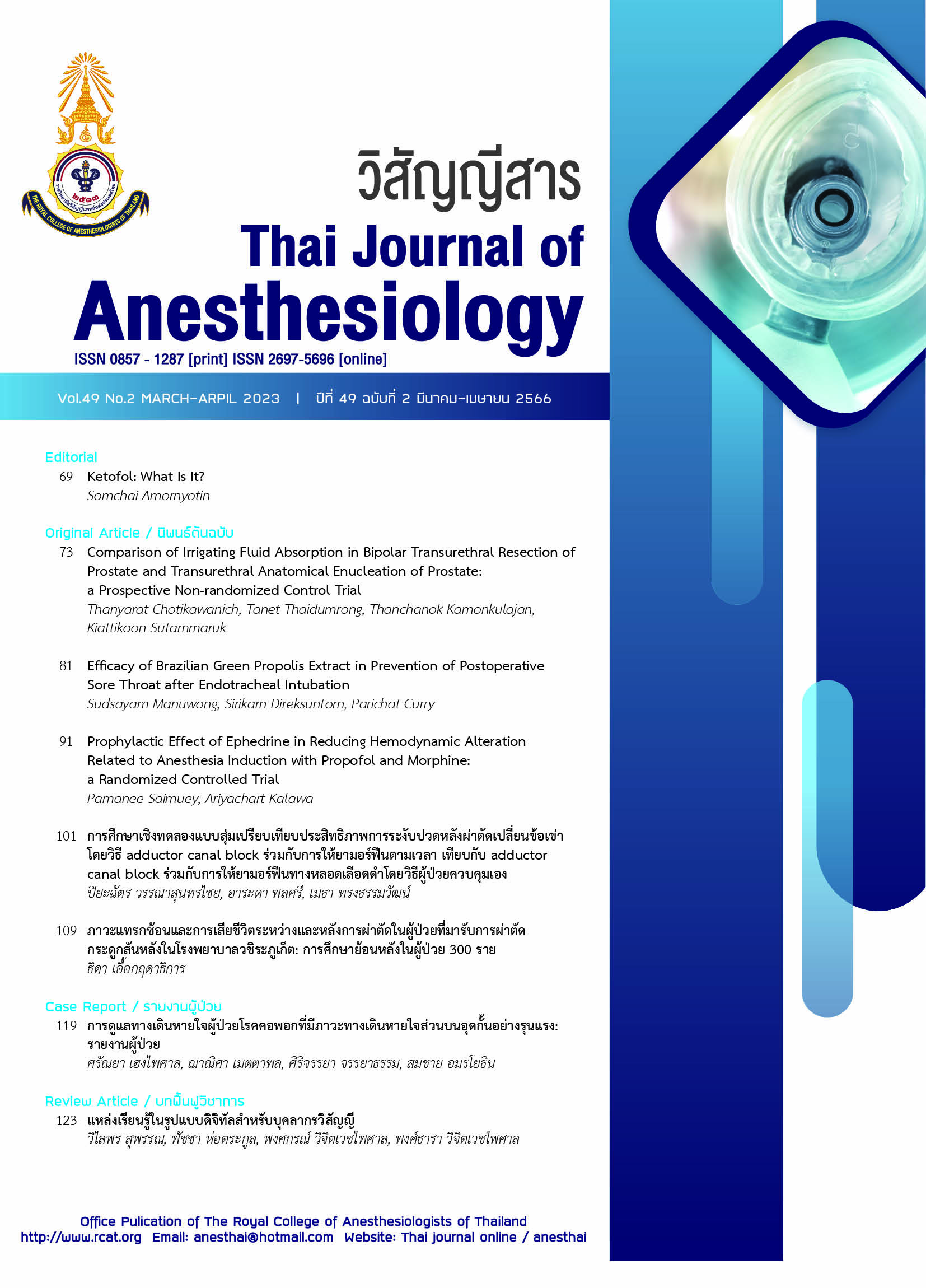Ketofol: What Is It?
Main Article Content
Abstract
Ketofol is the combination of ketamine and propofol in several concentrations. This combination has several ideal anesthetic properties. Numerous clinical studies of the use of ketofol have been evaluated. To date, there is significant interest in ketofol as an agent for procedural sedation. It commonly utilized for several procedures.1 Ketamine, a neuroleptic anesthetic agent, works on thalamocortical and limbic N-methyl-D-aspartate (NMDA) receptors. It can be given through intravenous or intramuscular routes.2,3 Propofol, a sedative, hypnotic and anesthetic agent, is also an antagonist at NMDA receptors. Propofol is a 2,6-diisopropylphenol with sedative-hypnotic properties. It is highly lipophilic and distributes extensively in the body. With an attractive pharmacokinetic profile of rapid onset and offset, propofol has a place in medical and dental care.4,5
Article Details

This work is licensed under a Creative Commons Attribution-NonCommercial-NoDerivatives 4.0 International License.
References
Amornyotin S. Ketofol: a combination of ketamine and propofol. J Anesth Crit Care Open Access. 2014;1:1-6.
Amornyotin S. Ketamine: pharmacology revisited. Int J Anesthesiol Res. 2014;2:42-4.
Amornyotin S. Ketamine: an old drug commonly used in clinical practice. Thai J Anesthesiol. 2023;49:1-3.
Amornyotin S. Sedative and analgesic drugs for gastrointestinal endoscopic procedure. J Gastroenterol Hepatol Res. 2014;3:1133-44.
Pandit JJ. Intravenous anesthetic agents. Anesth Intens Care Med. 2011;12:144-50.
Amornyotin S, Kongphlay S. Esophagogastro-duodenoscopy procedure in sick pediatric patients: a comparison between deep sedation and general anesthesia technique. J Anesth Clin Res. 2012;3:1000185.
Amornyotin S, Aanpreung P. Clinical effectiveness of an anesthesiologist-administered intravenous sedation outside of the main operating room for pediatric upper gastrointestinal endoscopy in Thailand. Int J Pediatr. 2010;2010:748564.
Amornyotin S, Aanpreung P, Prakarnrattana U, Chalayonnavin W, Chatchawankitkul S, Srikureja W. Experience of intravenous sedation for pediatric gastrointestinal endoscopy in a large tertiary referral center in a developing country. Pediatr Anesth. 2009;19:784-91.
American Society for Gastrointestinal Endoscopy. Position statement: nonanesthesiologist administration propofol for GI endoscopy. Gastrointest Endosc. 2009;70:1053-9.
Amornyotin S. Registered nurse-administered sedation for gastrointestinal endoscopic procedure. World J Gastrointest Endosc. 2015;7:769-76.
Wang Y, Jiang X, Pang L, et al. A randomized double-blind controlled study of the efficacy of ketofol with propofol-fentanyl and propofol alone in termination of pregnancy. Afr J Pharm Pharmacol. 2012;6:2510-4.
Yazdi AG, Ayatollahi V, Hashemi A, Behdad S, Yazdi EG. Effect of two different concentrations of propofol and ketamine combinations (Ketofol) in pediatric patients under lumbar puncture or bone marrow aspiration. Iranian J Pediatr Hematol Oncol. 2013;3:187-92.
Coulter FLS, Hannam JA, Anderson BJ. Ketofol simulations for dosing in pediatric anesthesia. Pediatr Anesth. 2014;24:806-12.
Coulter FLS, Hannam JA, Anderson BJ. Ketofol dosing simulations for procedural sedation. Pediatr Emerg Care. 2014;30:621-30.


